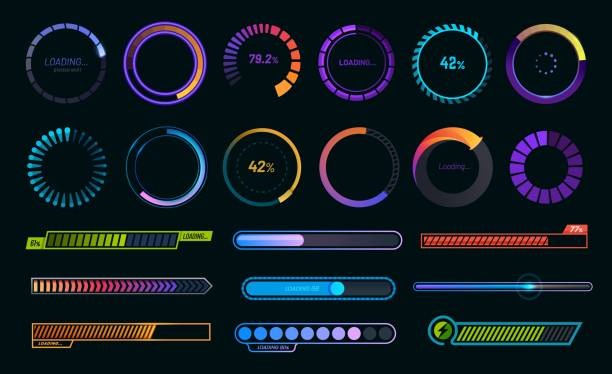Key Takeaways:
- User experience (UX) is crucial to mobile application success.
- Emerging technologies are transforming UX design, bringing exciting possibilities and challenges.
- Designers should focus on accessibility and inclusiveness in their designs.
- Incorporating real-life user feedback can drive continuous improvement in UX design.
The future of user experience (UX) design in mobile applications is becoming more sophisticated and user-centric, with smartphones becoming integral to everyday life. Designers must meet functional needs and anticipate user behaviors while emerging technologies like AI, machine learning, and augmented reality reshape user engagement. Balancing innovation with usability is crucial to ensure efficient, accessible, and emotionally resonant mobile apps.
The Importance of UX in Mobile Applications
In today’s ever-evolving digital landscape, having a robust user experience (UX) design is not merely optional but crucial. As we delve into UX design for companies in Boston, it becomes evident that understanding the subtle nuances of user interaction holds paramount importance in determining the success of a mobile application. The app’s exceptional UX design ensures user engagement, efficiency, and retention, leading to increased referrals and organic word-of-mouth promotion, enhancing the overall user experience. In a world where countless apps tirelessly compete for the same user attention, the well-crafted UX can potentially differentiate one app from the next in a crowded app marketplace.
UX design encompasses a holistic approach to creating digital interactions that are visually appealing, highly functional, and user-friendly. Successful mobile applications prioritize a seamless navigation path that allows users to achieve their goals swiftly and with minimal obstacles, ensuring their smooth and enjoyable journey. This effortless interaction fosters a loyal customer base that appreciates both the efficiency and consistency in their digital interactions, influencing positive user behavior and long-term app adoption.
Emerging Technologies Shaping UX Design
The rapid advancement of technologies such as artificial intelligence (AI), augmented reality (AR), and machine learning (ML) is revolutionizing the UX design landscape, offering unprecedented opportunities for innovation and engagement. AI, for instance, can sift through immense datasets to predict user behavior and preferences, enabling designers to create highly personalized and intuitive user journeys. Augmented reality and machine learning transform the user interface (UI) into immersive, interaction-oriented experiences. These technologies blur the lines between digital and physical worlds, enhancing the user experience. Machine learning adapts to user interactions, providing tailored content and functionalities. These technologies are becoming integral to modern UX design strategies, creating a dynamic, evolving interaction between users and digital products.
Designing for Accessibility and Inclusiveness
In an increasingly diverse and inclusive world, the focus on accessibility and inclusiveness in application design has become more essential. Integrating these elements into design isn’t just an ethical responsibility; it’s also a strategic business move that opens access to broader audience groups and potential users. When considering accessibility, designers might incorporate compatibility with screen readers or high-contrast views to assist those with visual impairments. Keyboard navigation can also bolster usability for users with physical or motor disabilities. Moreover, ensuring all text is easily legible, and that color contrasts comply with accessibility guidelines contributes to an optimal user experience for everyone. Embracing inclusivity in UX ensures no user is left behind, enhancing user satisfaction and establishing a foundation for strong and diverse user communities, ultimately leading to more successful and widely accepted applications.
User-Centric Approach: The Key to Successful UX Design
The key to developing applications that connect with users and successfully grab their attention is prioritizing their needs when making design choices. A user-centric approach emphasizes thorough research and empathy toward user needs, leading to applications that align with user expectations and desires. Gathering and integrating user feedback throughout the design process is crucial to truly understanding what users want and addressing their pain points effectively. This approach enhances immediate user satisfaction and fosters a culture of continuous improvement where the application evolves in tandem with shifting user needs and technological advancements. Leveraging user insights ensures that applications remain relevant, user-friendly, and ahead of the curve in a rapidly changing digital landscape.
The Role of Personalization in UX
Personalization is pivotal in modern UX design, allowing applications to engage users by catering to their preferences and behaviors. By utilizing user data and advanced algorithms, personalization enables applications to dynamically adjust and deliver content and interfaces that resonate on a personal level, thereby significantly enhancing user engagement and satisfaction. This personalized approach makes users feel acknowledged and valued and extends their interaction time with the app, as users are more inclined to engage with content that feels tailored to them. Personalization is essential in fostering user loyalty and cultivating deeper emotional connections between users and applications.
Challenges in UX Design for Mobile
Designing effective UX for mobile platforms, while offering many opportunities, also presents unique challenges. From a diverse array of device specifications and operating systems to varying connectivity environments and user contexts, designers face a multitude of factors that can complicate the design process. Moreover, mobile usage is inherently unpredictable, crossing various bandwidth constraints, screen sizes, and environmental lighting conditions, requiring designers to be flexible and innovative in their approach. Overcoming these challenges often necessitates iterative design processes, wherein solutions are continuously tested, adapted, and refined to ensure the application remains user-friendly and capable of serving diverse user needs and environments.
Future Trends in Mobile UX Design
Innovation in mobile UX design trends is growing at the same rate as technological improvements. Emerging technologies such as voice-activated interactions, biometric authentication, and gesture-based navigation are reshaping the landscape and establishing new user interaction norms with applications. These trends reflect a shift towards more natural, intuitive interfaces that enhance user engagement and satisfaction. As these technologies continue integrating into everyday digital interactions, designers are challenged to stay ahead, constantly pushing the boundaries of what’s possible in mobile UX. Staying informed and adaptable to these shifts will be crucial for designers aspiring to continue delivering relevant, engaging, and cutting-edge digital products.
Conclusion: Continuous Improvement for the Best UX
Dedication to exceptional UX design becomes imperative in an era where mobile applications increasingly define digital interactions. Through the lens of continuous improvement, designers can meet users’ rising expectations by harnessing technological advancements, embracing accessibility, and listening to user feedback. This commitment maintains high levels of user satisfaction and sustains innovation and leadership within an ever-expanding digital marketplace. In the quickly changing digital world, UX designers must prioritize agility, inventiveness, and empathy to keep their work relevant and impactful.



